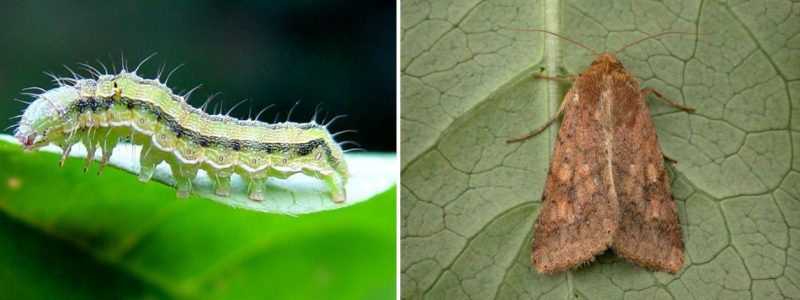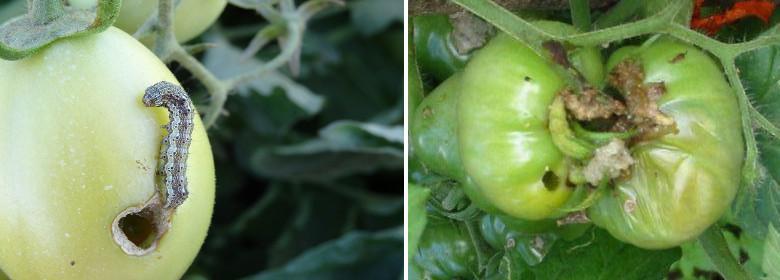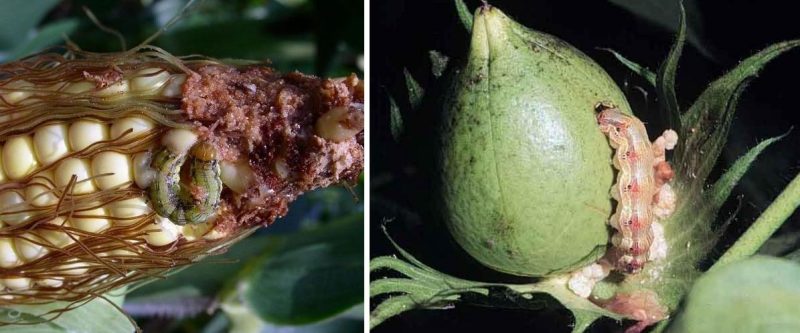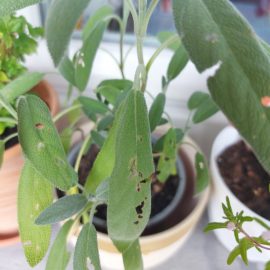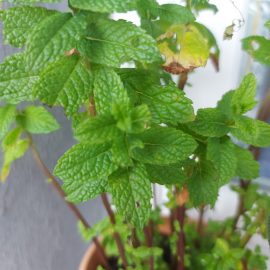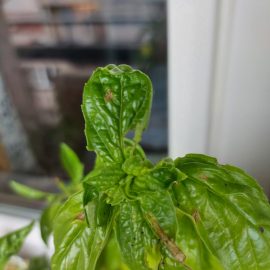The cotton bollworm (Helicoverpa armigera) – pest management
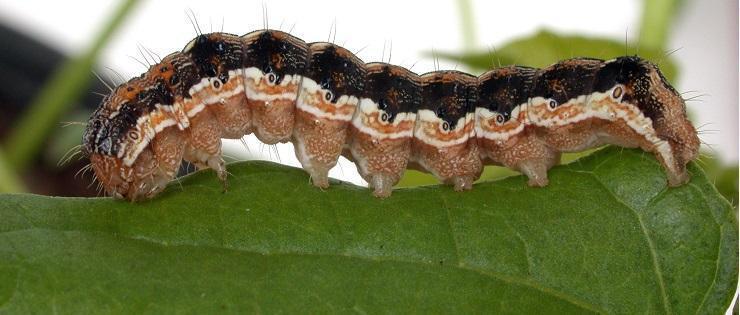
The cotton bollworm is the larval stage of the nocturnal butterfly Helicoverpa armigera. It is a polyphagous species, reported in Southern Europe, Asia, Africa, Australia, and New Zealand.
Description. Adults are butterflies 1.4-2 cm long, with a wingspan of 3-4 cm. Adults display differences in color, being brown with shades of gray, with numerous dark and irregular spots and transverse lines on the forewing. On it has a dark area towards the tip of the wing and a spot in the center. The hind wings are lighter in color towards the base and darker towards the top. Towards the base, it has a serrated stripe.
The eggs are small, about 0.5 mm, white-yellow. The larvae (caterpillars) are large, 1.5-2 cm long and have various colors, from green-brown to dark brown. Dorsally, the larva has a longitudinal stripe and two darker side stripes. The pupa is dark brown.
Biology and ecology
This species usually produces 2-3 generations per year and overwinters as a pupa in the ground.
The first adults appear in late spring, in May-June and the next generations develop in July and at the end of August. After a period of several days of feeding, they copulate and then lay the eggs, processes that take place during the night. A female can lay between 500 and 1500 eggs or even more. They are laid one by one or in groups on the leaves, shoots, stems, but especially on the flowers of tomatoes, corn, cotton, chickpeas, peppers, and wild plants.
The development of the butterfly is influenced by the temperature, humidity, and nutrition of the larval and adult stage. The larvae hatch after a week and go through 5 larval stages until they reach maturity. Once mature, they leave the plant and the attacked organ and enter the surface layer of the soil to turn into a pupa. The development of a generation takes place over 35-40 days. In protected areas, this development lasts between 28-33 days.
Attacked plants and damages
The cotton bollworm is a polyphagous species, causing damages to over 120 species of plants, such as tomatoes, corn, tobacco, peppers, eggplants, beans, alfalfa, cotton, ornamental plants, etc.
The young larvae, stages I and II, consume the tissue and epidermis of the leaf and the flowers, after which, starting with the IIIrd stage, the larvae enter the fruit, consuming the pulp, though they prefer the seeds. During feeding, the larva leaves behind excrement on the outside of the attacked organ, making it easy to identify.
In corn crops, the larvae feed initially on the silk and then on the young beans from the top of the cob.
They cause damage to chickpea and castor-oil plant seeds, peas, and tobacco seeds.
In tomatoes, peppers, and eggplants crops, caterpillars penetrate the fruit, destroying the pulp and seeds. Various harmful fungi penetrate these galleries, which leads to the destruction of the fruit in a short time.
This caterpillar causes significant damage to tomato crops in protected areas. A single caterpillar can attack all the tomatoes in a bunch. Once in the fruit, the larvae are difficult to fight and the damage has already been done.
Control
Soil work and deep plowing cause the destruction of pupae in the surface layer of the soil. Weed control eliminates the food source of adults and larvae. It is recommended to set up early crops so that, when the pest appears, the plants are vigorous and the impact of the pest is not so great.
Being active at night, adults are harder to notice. It is important that the first treatment is done at the first observation of the pest. After hatching, caterpillars are very sensitive to treatments because they have reduced mobility and feeding is difficult and requires considerable effort.
In unfavorable conditions, characterized by lack of food and unfavorable temperatures, the pest can enter the diapause for several months.
Chemical treatments must be applied after the first signs of the pest’s presence, with specific insecticides.
Recommended products
-
You can find products on a different store
Change Store -
You can find products on a different store
Change Store -
You can find products on a different store
Change Store -
You can find products on a different store
Change Store -
You can find products on a different store
Change Store -
You can find products on a different store
Change Store -
You can find products on a different store
Change Store -
You can find products on a different store
Change Store -
You can find products on a different store
Change Store -
You can find products on a different store
Change Store -
You can find products on a different store
Change Store -
You can find products on a different store
Change Store -
You can find products on a different store
Change Store -
You can find products on a different store
Change Store -
You can find products on a different store
Change Store -
You can find products on a different store
Change Store -
You can find products on a different store
Change Store -
You can find products on a different store
Change Store -
You can find products on a different store
Change Store -
You can find products on a different store
Change Store -
You can find products on a different store
Change Store -
You can find products on a different store
Change Store -
You can find products on a different store
Change Store -
You can find products on a different store
Change Store














































































































































































































































































































































































































































